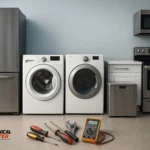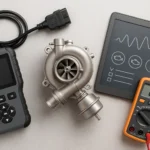
If you have a home air conditioner and live in a hot area, regular maintenance is key if you want it to function well and last a long time. It is also vital if you wish to maintain good indoor air quality and preserve your family’s health. One study of home air conditioning units found a clear link between the frequency of filter cleaning and health symptoms (including respiratory and allergy-related issues) among inhabitants. Your air conditioning unit’s maintenance schedule largely depends on where you live. Overall, a once-a-year check is deemed sufficient. However, in warmer countries (for instance, Malaysia), specialists sometimes recommend quarterly or semi-annual check-ups. As a general rule, the frequency of required checks depends on how often you use your air conditioner, the climate where you live, and whether you clean the filters regularly.
Keeping Your Unit Clean
One way to save money and prolong the lifespan of your AC system is to keep the outdoor unit clean. This component pulls air through a condenser coil, sometimes trapping dust and debris in its fins. Whether you are cleaning a ductless air conditioning system or a centralized AC unit, start by removing leaves and other items that can potentially become trapped in the coils. To clean the coil fins, ask your maintenance professional to disconnect the system from its power source and vacuum the coil, taking care not to bend the fins (as this can affect your unit’s performance). Make sure they also clean the evaporator coil and the condensate drains. They should use a vacuum or a small brush to clear any clogs.
Replacing Your Filter
One task you may wish to take charge of yourself is changing your AC’s filter. There’s no single rule for how often to do this. If you have pets or you live in a dusty area, you may need to change the filter more frequently than if you live in a rural area. As a general rule, aim to check the filter at least once every three months. Make sure the power is turned off, then inspect the filter for signs of dust, bugs, and other debris. Clean your filter with a vacuum or water, or change it, ensuring it is positioned in the correct direction.
Checking the Refrigerant Level and Looking for Leaks
Refrigerant liquid plays a crucial role in the operation of your AC unit. It absorbs heat from your home’s interior and transfers it to the outdoor unit, where the heat is released into the exterior. However, leaks can occur owing to numerous causes, including the deterioration of moving parts, electrical and metal fittings, and rubber seals. They can also result from metal corrosion in AC coils, which can develop pinhole leaks. Even slight movements and vibrations can weaken joints and connections. If you notice that your air conditioner isn’t cooling as well or is dripping water, it’s a good sign that your refrigerant is leaking. This type of damage can result in costly repairs, so address it as soon as possible.
Clearing Drain Lines and Water Pans
Clearing the drain line and water pan of your AC is another relatively easy and quick task to perform. Doing so is necessary to prevent water damage and mold growth. When cleaning these parts of your unit, ensure the AC is turned off. Next, locate the drain line, which is usually made of PVC and connected to the indoor unit. You may find it in your garage or attic. The line typically has a T-shaped access cap near the indoor unit. Remove this cap and inspect it for standing water, which could indicate a clog. Use a wet/dry vacuum on the outdoor end of the drain to remove debris or standing water.
Flush the line by pouring a cup of distilled white vinegar into the drain line through the access point. Leave the solution for 30 minutes to kill algae and mold, then flush the line. For stubborn blockages, try a stiff brush or pipe cleaner. Next, replace the cap. To clean the pan, check the drain pan for mold, dirt, or standing water. Clean the pan with hot water and a mild detergent, then wipe it with a rag. Ensure the pan is aligned correctly so that it directs condensate water to the drain line.
Maintaining your AC system is essential to protect your family’s health and extend the lifespan of your cooling equipment. Start by scheduling regular maintenance, ensuring your team cleans and replaces necessary parts and repairs any leaks. Also, pay attention to the exterior of your unit, as well as the drain lines and water pans. Replace your filters as frequently as recommended by your AC dealer or maintenance team.
Conclusion
Proper air conditioner maintenance isn’t just about keeping your home cool — it’s about protecting your family’s health, improving energy efficiency, and extending the lifespan of your cooling system. By scheduling regular inspections, cleaning coils and filters, checking refrigerant levels, and clearing drain lines, you can prevent costly breakdowns and maintain optimal performance.
Whether you live in a tropical climate or a temperate zone, creating a consistent AC maintenance routine ensures cleaner air, lower utility bills, and long-term comfort. Investing a little time in preventive care today will keep your air conditioner running smoothly for years to come — providing reliable cooling when you need it most.


